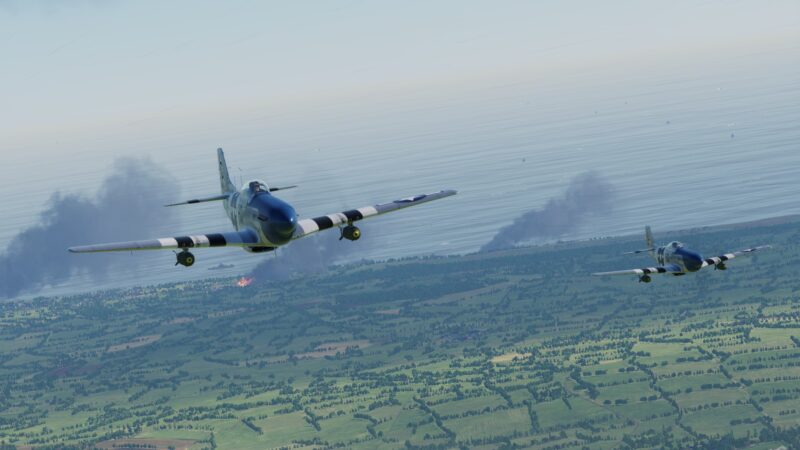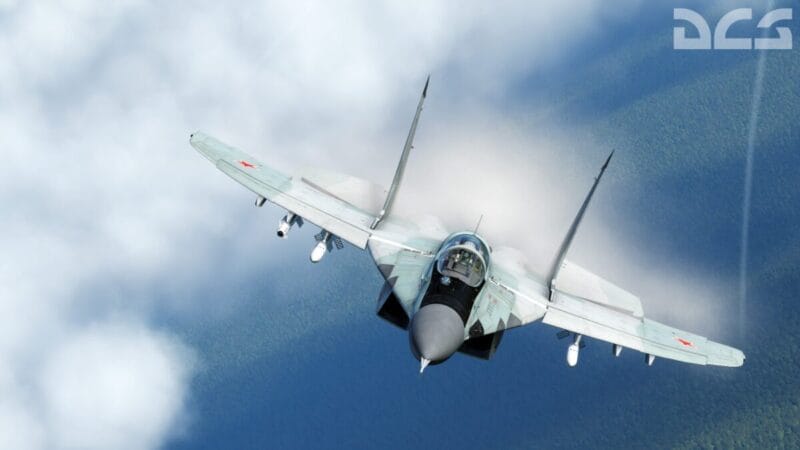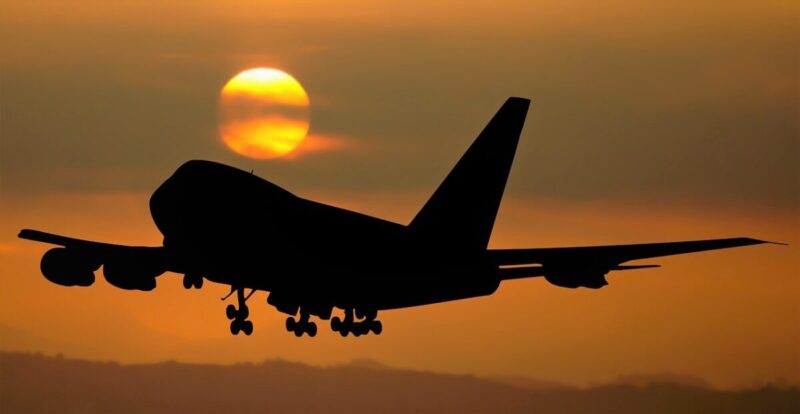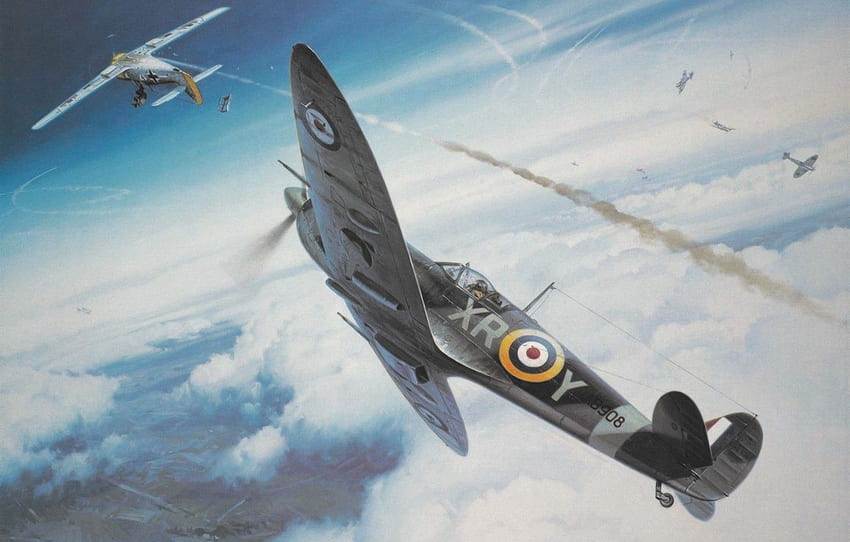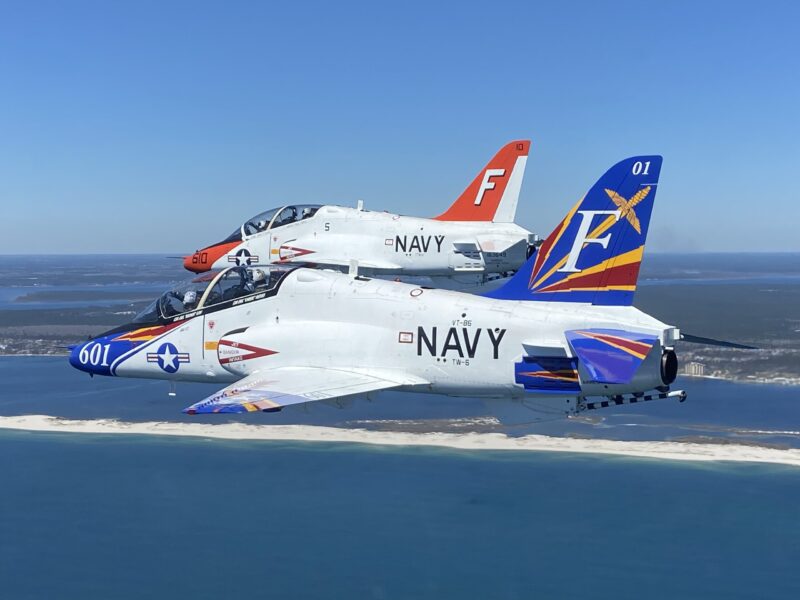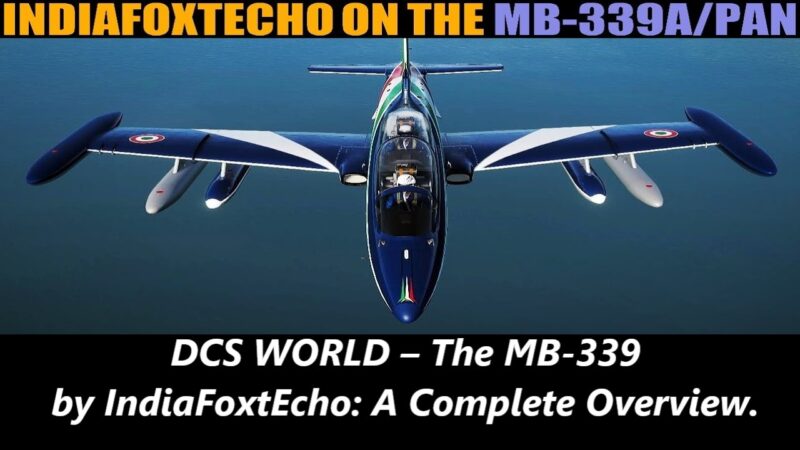DCS World War 2 Fighter Options and Performance for Beginners.
Introduction
Basic Fighter Maneuvers (BFM) are fundamental to aerial combat, shaping the effectiveness of fighter aircraft in dogfights are DCS World War 2 Fighters. Within DCS World, each WWII-era aircraft possesses distinct flight characteristics that influence combat performance. This analysis examines how the Spitfire Mk IX, P-51D Mustang, Bf 109 K-4, Fw 190 A-8, Fw 190 D-9, P-47D Thunderbolt, as well as upcoming additions like the F4F Wildcat and F4U Corsair compare in both historical and simulated engagements.
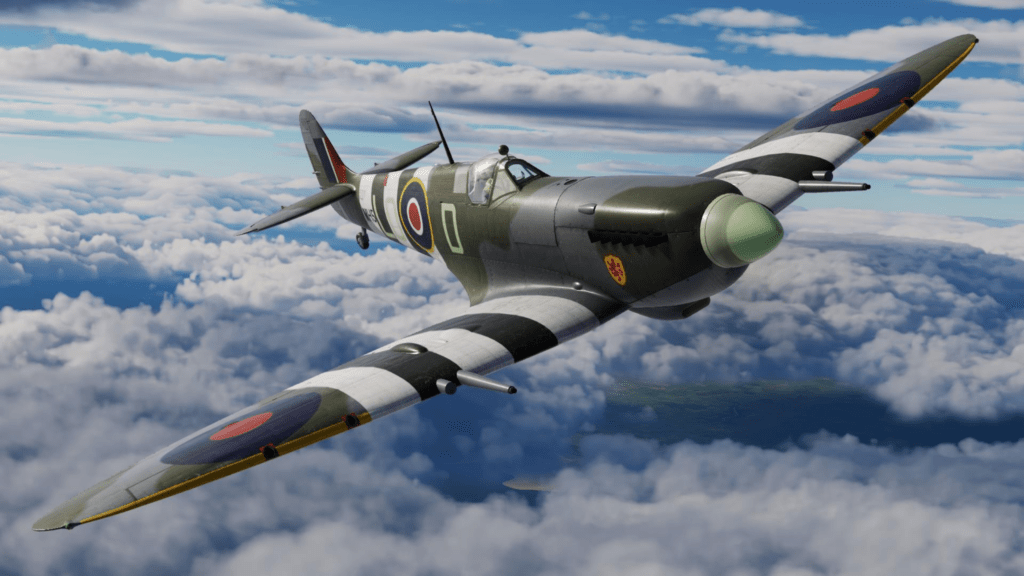
We will evaluate DCS World War 2 Fighter aircraft’s historical development, flight characteristics, optimal corner speeds, and effectiveness in one-circle and two-circle fights using available performance data. Additionally, we will contrast DCS World’s flight models with real-world data, identifying discrepancies that impact combat tactics.
To ensure an in-depth comparison, this analysis also includes degrees per second turn rates, expanded discussions on maneuvering energy, and the influence of altitude on combat effectiveness.
1. Historical Context and Aircraft Design
Spitfire Mk IX (1942) DCS World War 2 Fighter
A DCS World War 2 Fighter developed to counter the agile Fw 190A, the Spitfire Mk IX incorporated a Merlin 61 engine that significantly improved performance at altitude. It features an elliptical wing design for exceptional agility, superior climb rate, and outstanding sustained turn capability. The Spitfire was renowned for its ability to out-turn nearly all its adversaries, making it one of the most maneuverable aircraft of the war.
The Mk IV Spitfire played a pivotal role in the evolution of one of World War II’s most iconic fighter aircraft hence this DCS World War 2 fighter had to find its way into the mix. Developed as part of Supermarine’s continual improvements to the Spitfire lineage, the Mk IV was an early prototype for the Griffon-powered variants, designed to enhance speed, altitude performance, and firepower. Although it never entered mass production, it served as a crucial testbed for technological advancements that later shaped the Mk XII and Mk XIV models.
The introduction of the Rolls-Royce Griffon engine in the Mk IV significantly increased horsepower, allowing for superior climb rates and top speeds exceeding 400 mph. Equipped with improved armament and aerodynamics, the Mk IV demonstrated incredible agility and high-altitude capabilities, reinforcing the Spitfire’s dominance in air combat. Its development laid the foundation for the next generation of Spitfires, ensuring the aircraft remained a formidable force against the Luftwaffe and beyond.
P-51D Mustang (1944)
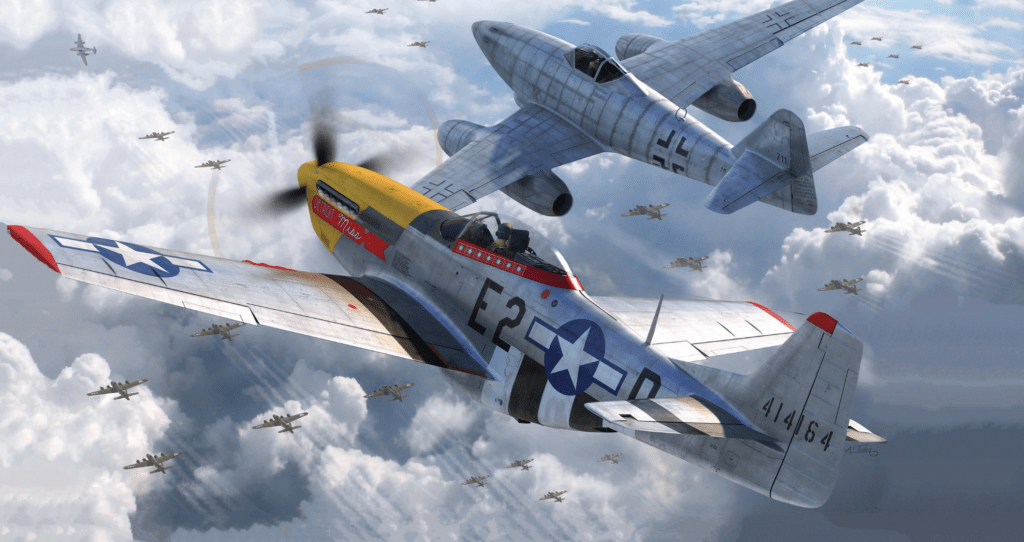
This DCS World War 2 fighter originally conceived as a long-range escort fighter, the P-51D combined high speed, excellent energy retention, and a laminar-flow wing for improved aerodynamic efficiency. It excels in boom-and-zoom tactics but has an average sustained turn rate. However, at high speeds, its control surfaces remain responsive, granting it an advantage in high-energy engagements.
The P-51D Mustang was a game-changer in the air war over Europe, providing the Allies with the long-range escort capability they desperately needed to strike deep into Nazi territory. Introduced in 1944, the P-51D was the definitive version of North American Aviation’s legendary fighter, featuring a powerful Packard-built Rolls-Royce Merlin engine, six .50 caliber machine guns, and an advanced bubble canopy for improved visibility.
What set the Mustang apart was its extraordinary range—when fitted with external fuel tanks, it could escort B-17 and B-24 bombers all the way to Berlin and beyond, ensuring their survival against German interceptors. Before its arrival, unescorted bombers suffered heavy losses to Luftwaffe fighters, limiting the effectiveness of strategic bombing campaigns.
With the P-51D providing top-cover, bomber formations could strike deep into enemy territory with far greater success, crippling Germany’s war production and hastening the end of the war. The Mustang’s speed, firepower, and endurance made it one of the greatest fighters of WWII, securing air superiority for the Allies and cementing its place in aviation history.
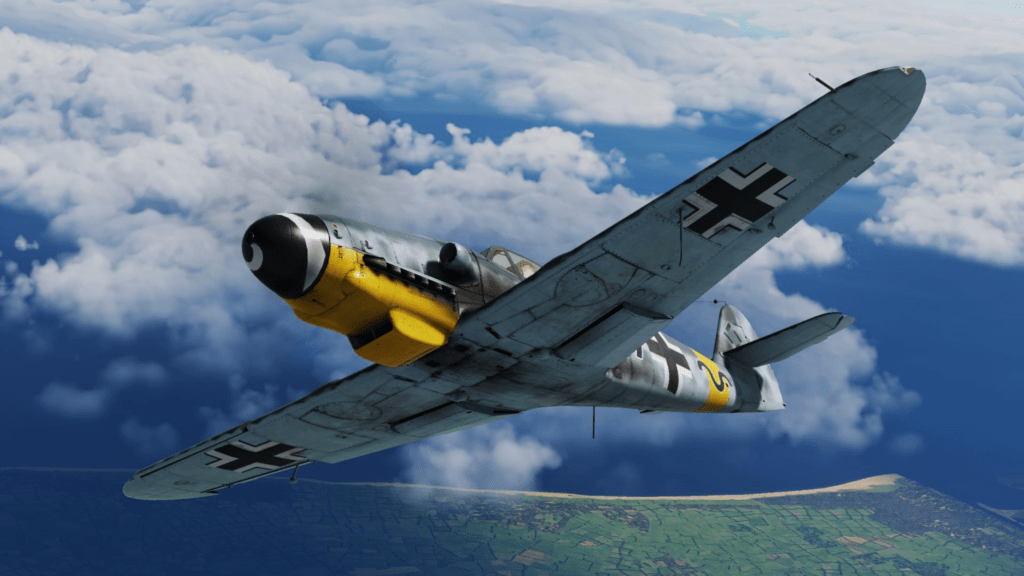
Bf 109 K-4 (1944)
This DCS World War 2 Fighter was the final wartime variant of the Bf 109, the K-4 was optimized for high-speed vertical engagements, superior climb rate, and high-altitude combat. While agile, its high-speed control surfaces stiffen, limiting maneuverability at extreme speeds. The aircraft retains excellent instantaneous turn performance, though prolonged engagements may see it lose energy more rapidly than its counterparts.
The Bf 109 K-4 was the final and most advanced variant of Messerschmitt’s legendary Bf 109 fighter, introduced in late 1944 as Germany’s desperate answer to the growing Allied air superiority. Equipped with the powerful DB 605D engine, the K-4 was capable of speeds exceeding 440 mph (700 km/h), making it one of the fastest piston-engine fighters of World War II.
It also featured an upgraded armament package, typically including a 30mm MK 108 cannon firing through the propeller hub, along with two 13mm MG 131 machine guns, giving it devastating firepower against enemy bombers and fighters alike. Unlike earlier Bf 109 variants, the K-4 had a refined airframe, improved high-altitude performance, and a retractable tailwheel to reduce drag.
However, despite its formidable capabilities, the K-4 arrived too late and in too few numbers to turn the tide of the war. While it remained a deadly opponent, Germany’s dwindling resources, fuel shortages, and the overwhelming numerical superiority of Allied aircraft meant that even the ultimate evolution of the Bf 109 could not prevent the Luftwaffe’s decline. Nevertheless, the Bf 109 K-4 remains a testament to the remarkable engineering of one of the most iconic fighters in aviation history.
Fw 190 A-8 (1944)
This DCS World War 2 Fighter designed for ruggedness and firepower, the Fw 190 A-8 features exceptional roll rate, heavy armament, and good acceleration. However, its turn rate lags behind the Spitfire and Mustang, making it more reliant on boom-and-zoom tactics. Unlike the Bf 109, it remains more stable in high-speed dives, making it a formidable opponent in energy fights.

The Fw 190 A-8 was one of the most heavily armed and versatile variants of Focke-Wulf’s formidable fighter, introduced in 1944 as a response to the increasing pressure from Allied air forces. Powered by the BMW 801 D-2 radial engine, it could reach speeds of 408 mph (656 km/h) and had exceptional low-to-medium altitude performance, making it a favorite among Luftwaffe pilots.
The A-8 featured a reinforced airframe and carried a devastating array of weapons, typically including four 20mm MG 151 cannons in the wings and two 13mm MG 131 machine guns above the engine. It could also be outfitted with rocket and bomb payloads, making it effective in both air superiority and ground-attack roles.
Although the Fw 190 A-8 was a lethal adversary, by the time of its introduction, the Luftwaffe was facing severe fuel shortages, pilot attrition, and overwhelming Allied numbers. Nevertheless, in the hands of an experienced pilot, it remained a dangerous opponent, capable of taking on Allied bombers and fighters alike.
Its rugged construction, heavy firepower, and adaptability ensured its place as one of the most respected and iconic German fighters of World War II.
Fw 190 D-9 (1944)
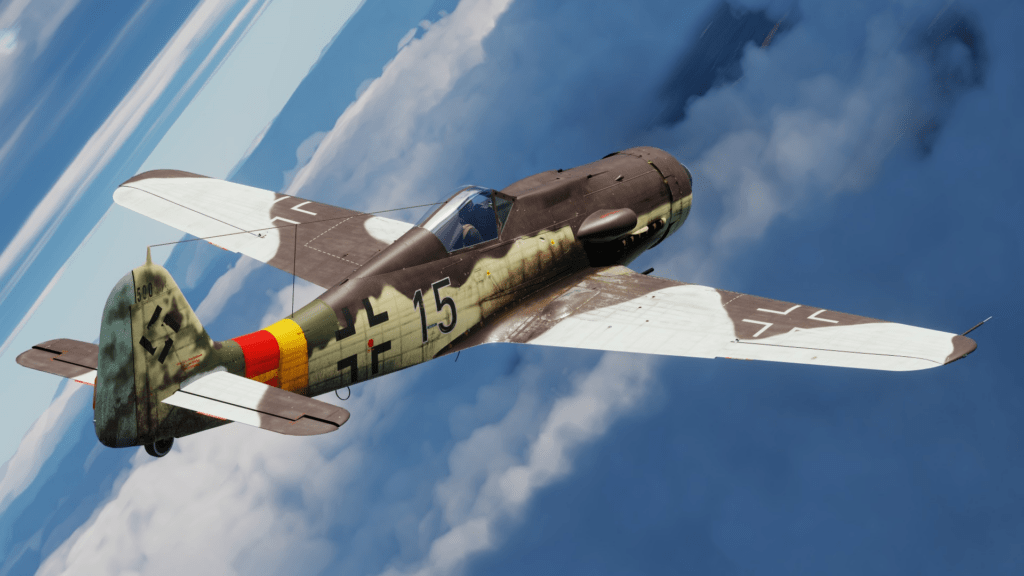
This DCS World War 2 fighter evolution of the Fw 190, the D-9 replaced the radial engine with a Jumo 213 inline engine, significantly enhancing speed, climb rate, and vertical fighting capabilities. It remains one of the fastest WWII aircraft in DCS. At mid-to-high altitudes, it benefits from exceptional speed retention, making it particularly dangerous in diving attacks.
The Fw 190 D-9, often called the Dora, was a high-performance evolution of the famed Focke-Wulf Fw 190 series, introduced in late 1944 to counter the increasing dominance of Allied air power. Unlike its radial-engine predecessors, the D-9 was powered by the liquid-cooled Junkers Jumo 213A engine, which significantly improved its high-altitude performance and gave it a top speed of 426 mph (685 km/h).
This transformation made the Dora one of the fastest and most capable German fighters of the war. Armed with two 20mm MG 151 cannons in the wings and two 13mm MG 131 machine guns in the fuselage, it was a formidable adversary in both dogfights and bomber interception.
Designed as an interim high-altitude solution before the introduction of next-generation jet fighters, the Fw 190 D-9 was often used to defend German airspace against P-51 Mustangs and escort the Me 262 jet fighters during takeoff and landing.
Though introduced too late to significantly alter the war’s outcome, the Dora was one of the best piston-engine fighters of the Luftwaffe, combining speed, firepower, and agility in a last-ditch effort to contest the Allied advance.
P-47D Thunderbolt (1943-1944)

Dubbed the “Jug,” the P-47D was designed for high-speed engagements, durability, and powerful armament. In DCS World War 2 fighter collection this iconic aircraft thrives in energy-based combat, utilizing its superior dive acceleration and structural resilience. It is most effective at high altitudes, where its turbocharged engine maintains performance, allowing it to dictate engagements.
The P-47D Thunderbolt, known as the Jug, was one of the heaviest and most rugged fighters of World War II, earning a fearsome reputation for its durability, firepower, and versatility. Introduced in 1943, the P-47D was powered by the massive Pratt & Whitney R-2800 Double Wasp radial engine, producing over 2,500 horsepower and propelling the aircraft to speeds exceeding 430 mph (692 km/h).
What set the Thunderbolt apart was its combination of speed, survivability, and devastating firepower—armed with eight .50 caliber M2 Browning machine guns, it could shred enemy fighters and bombers alike. With the addition of drop tanks, the P-47D gained impressive range, allowing it to escort bombers deep into German-occupied territory, though it truly excelled as a ground-attack aircraft.
Its heavy armor and ability to carry a substantial payload of bombs and rockets made it one of the most effective fighter-bombers of the war, capable of wreaking havoc on enemy tanks, trains, and infrastructure. Despite its size, the P-47D was a surprisingly agile dogfighter at high speeds, able to hold its own against enemy aircraft like the Bf 109 and Fw 190.
By the end of the war, the Jug had helped secure Allied air superiority and played a crucial role in the destruction of German ground forces, solidifying its legacy as one of the greatest fighters of World War II.
F4F Wildcat (Upcoming)
This DCS World War 2 fighter, the F4F Wildcat was a rugged naval fighter pivotal in early Pacific engagements. Despite being slower than many contemporaries, it possesses a tight turn radius, strong durability, and effective low-speed handling. Unlike later aircraft, its lack of high-speed performance requires pilots to engage in turn-based tactics to gain an advantage.

The F4F Wildcat was the U.S. Navy’s primary carrier-based fighter in the early years of World War II, proving to be a rugged and reliable warplane despite being outclassed in speed and maneuverability by the Japanese A6M Zero. Introduced in 1940 by Grumman, the Wildcat was powered by the Pratt & Whitney R-1830 Twin Wasp radial engine, giving it a top speed of 318 mph (512 km/h).
Armed with four to six .50 caliber M2 Browning machine guns, it packed a powerful punch for its size. Although it lacked the agility of Japanese fighters, the Wildcat’s superior durability, armor protection, and self-sealing fuel tanks allowed it to absorb damage and keep fighting—a crucial advantage in the brutal air battles of the Pacific Theater. U.S. Navy and Marine Corps pilots developed the “Thach Weave” tactic to counter the Zero’s superior maneuverability, helping Wildcats hold their own in dogfights.
The F4F played a pivotal role in key battles such as Coral Sea, Midway, and Guadalcanal, holding the line until the more advanced F6F Hellcat replaced it. Despite being overshadowed by later aircraft, the Wildcat’s resilience and the skill of its pilots helped turn the tide of the war, making it a legendary fighter in U.S. naval aviation history.
F4U Corsair (Upcoming)
Recognized by its distinctive inverted gull-wing design, the F4U Corsair delivered exceptional speed, climb rate, and firepower. It was one of the most effective carrier-based fighters of WWII, excelling in both turn fighting and energy tactics. While it can outmaneuver most aircraft at medium speeds, its high-speed handling is less precise, requiring careful control inputs.

The F4U Corsair was one of the most formidable fighter aircraft of World War II, known for its distinctive gull-wing design, blistering speed, and rugged firepower. Introduced in 1942 by Vought, the Corsair was powered by the mighty Pratt & Whitney R-2800 Double Wasp radial engine, producing 2,000 horsepower and propelling the aircraft to speeds of 446 mph (718 km/h)—making it one of the fastest piston-engine fighters of the war.
Armed with six .50 caliber M2 Browning machine guns and capable of carrying bombs and rockets, the Corsair was a lethal adversary in both air-to-air combat and ground attack missions. Initially plagued by carrier landing difficulties due to limited cockpit visibility and bouncing on touchdown, the Corsair was first deployed primarily by Marine Corps squadrons operating from land bases in the Pacific.
It quickly earned the nickname “Whistling Death” among Japanese forces due to its high-speed attack runs and devastating firepower. The Corsair dominated in battles against the A6M Zero, using its superior speed, roll rate, and firepower to outmatch its lighter adversaries. By the later years of the war, modifications allowed it to operate more effectively from aircraft carriers, leading to widespread use by the U.S. Navy.
The Corsair remained in service well beyond World War II, playing a crucial role in the Korean War, and solidifying its status as one of the greatest naval fighters of all time.
- Joystick / HOTAS – AMAZON.com
- Rudder Pedals – AMAZON.com
- Throttle Quadrant – AMAZON.com
- Gaming Chair – AMAZON.com
- VR Headset – AMAZON.com
2. Aerodynamic Performance Comparison.
| Aircraft | Corner Speed (MPH) | Sustained Turn Rate (deg/sec) | Instantaneous Turn Rate (deg/sec) |
|---|---|---|---|
| Spitfire Mk IX | ~220-240 | 19-21 | 22-24 |
| P-51D Mustang | ~270-300 | 15-17 | 18-20 |
| Bf 109 K-4 | ~250-280 | 17-19 | 20-22 |
| Fw 190 A-8 | ~300-330 | 13-15 | 16-18 |
| Fw 190 D-9 | ~320-340 | 14-16 | 17-19 |
| P-47D Thunderbolt | ~310-340 | 12-14 | 15-17 |
| F4F Wildcat | ~220-250 | 18-20 | 21-23 |
| F4U Corsair | ~270-310 | 16-18 | 19-21 |
3. Real-World vs. DCS Flight Models
DCS offers an exceptional level of realism but deviates in certain areas:
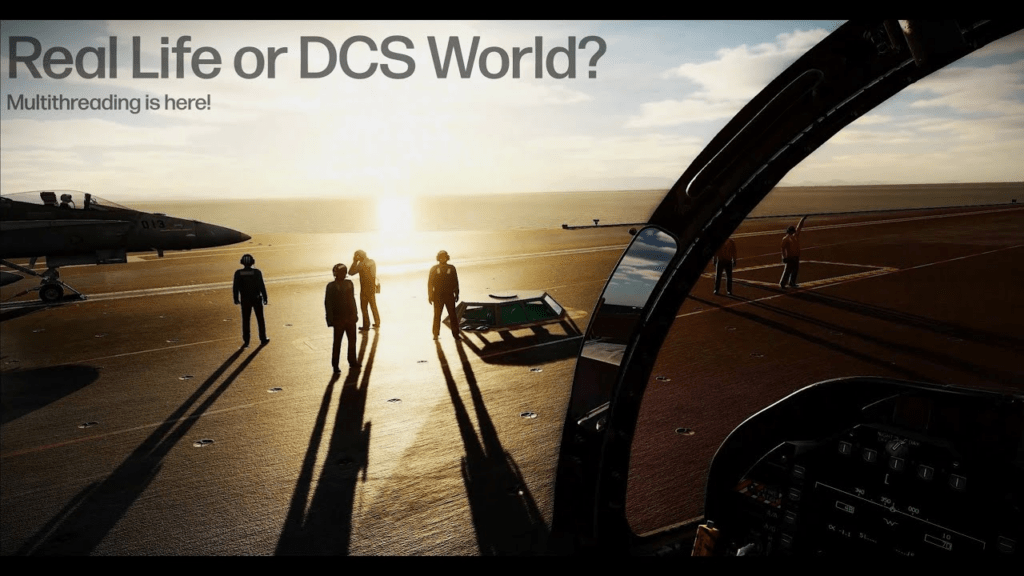

- Structural Load Tolerance – Some aircraft, particularly the P-51D and Spitfire, sustain higher G-loads than their real-world counterparts, allowing more aggressive turns.
- Altitude Effects – While high-altitude performance is well-modeled, supercharger dynamics and engine response to altitude can differ from historical data.
- Energy Retention – Aircraft like the Fw 190 D-9 seem to retain energy slightly better in DCS, impacting sustained maneuverability predictions.
- Real-World vs. DCS Flight Models
- Digital Combat Simulator (DCS) is renowned for its high-fidelity flight models, striving to replicate real-world aircraft performance as accurately as possible. However, despite meticulous attention to detail, there are inherent differences between real-world flight dynamics and simulated flight models due to various limitations in data availability, computational physics, and pilot feedback.
- Key Differences Between Real-World and DCS Flight Models
- Aerodynamic Data & Computational Limits
- Real-world aircraft experience complex aerodynamic forces influenced by turbulence, micro-weather conditions, and material flexing—some of which are difficult to fully replicate in a simulator.
- While DCS employs advanced physics engines (such as ED’s Professional Flight Model (PFM) and External Flight Model (EFM)), these models rely on available aerodynamic data, which may not always cover the entire flight envelope, especially in extreme conditions like high-G maneuvers or post-stall behavior.
- Aircraft Performance Data
- Real aircraft data is sourced from flight manuals, wind tunnel testing, declassified military documents, and performance charts. However, classified or proprietary data for modern aircraft (like the F-22 or Eurofighter Typhoon) is often unavailable, requiring DCS developers to estimate some parameters based on open-source information and pilot feedback.
- For WWII and Cold War aircraft, historical test reports and pilot interviews provide valuable insight, but variations in engine wear, fuel types, and manufacturing tolerances mean that no two real aircraft perform identically.
- Real aircraft data is sourced from flight manuals, wind tunnel testing, declassified military documents, and performance charts. However, classified or proprietary data for modern aircraft (like the F-22 or Eurofighter Typhoon) is often unavailable, requiring DCS developers to estimate some parameters based on open-source information and pilot feedback.
- Control Feel & Pilot Feedback
- In real-world flying, pilots experience G-forces, seat-of-the-pants feel, stick forces, and cockpit vibrations, none of which can be fully replicated in DCS without specialized motion platforms.
- DCS compensates through stick response curves and force feedback but still lacks the full physical experience of flying a real aircraft.
- Damage Modeling & Environmental Effects
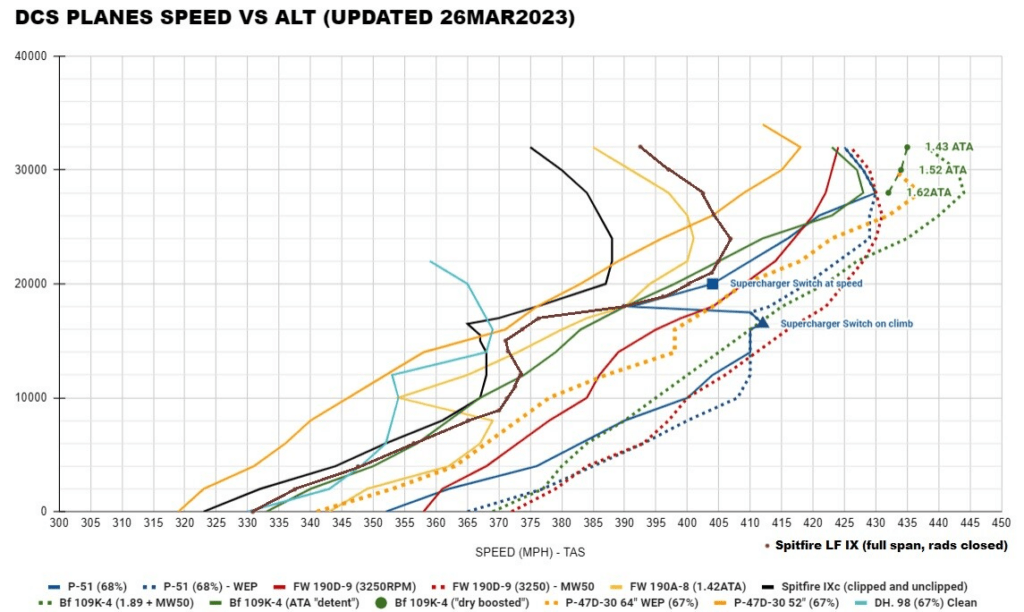
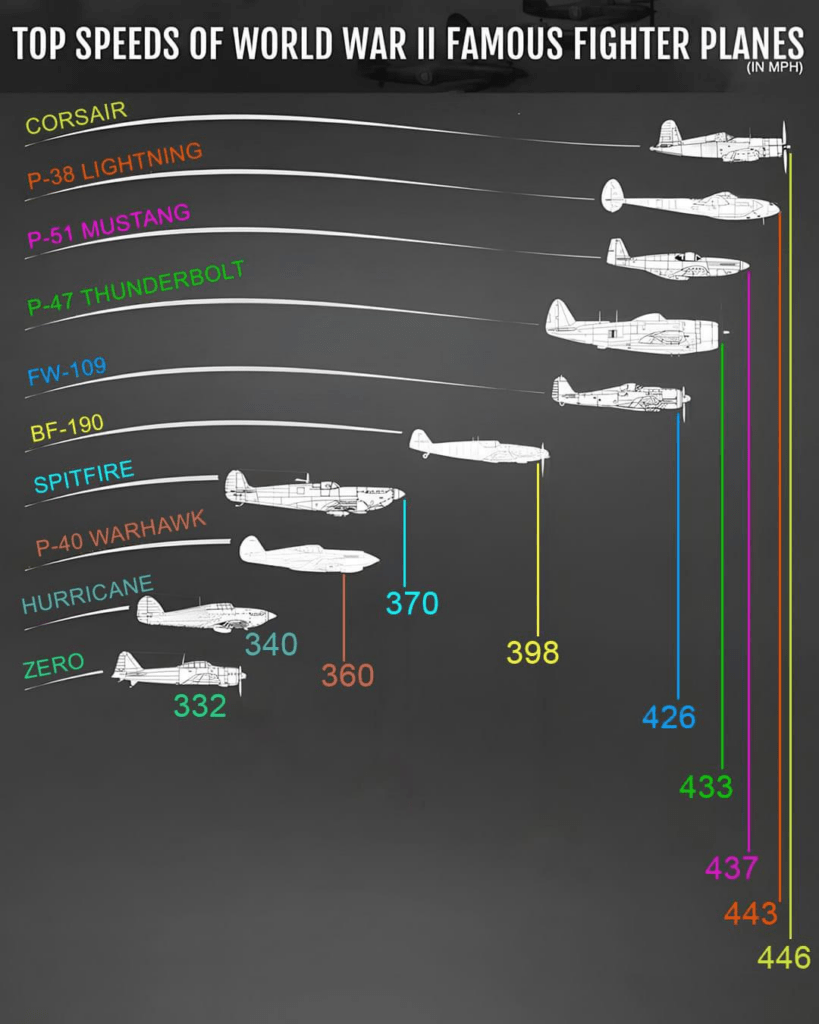
- Real aircraft are affected by factors such as battle damage, fuel imbalance, and component wear, which are modeled to an extent in DCS but may not account for all unpredictable failures seen in real-world combat.
- Environmental factors like crosswinds, ground effect, and turbulence are modeled but may not always match the complexity of real-world conditions.
- How DCS Improves Fidelity Over Time
- Gathering Real-World Data
- Developers use a combination of:
- Pilot manuals and technical orders (e.g., NATOPS, TO 1F-16CM-1)
- Wind tunnel and CFD (Computational Fluid Dynamics) simulations
- Declassified government reports and test flights
- Historical combat reports and veteran pilot testimonies
- Developers use a combination of:
- Pilot & SME (Subject Matter Expert) Feedback
- Former military pilots and engineers provide direct feedback on how aircraft handle in reality vs. DCS.
- Adjustments are made to flight model behavior, engine performance curves, and control responsiveness based on these insights.
- Ongoing Updates & Refinements
- DCS flight models are continuously updated based on new findings, community reports, and further pilot testing.
- Beta testing and patches help refine physics inaccuracies over time, ensuring closer alignment with real-world performance.
- Conclusion
- While DCS provides some of the most realistic flight models available in consumer simulations, there will always be differences due to data limitations, physical sensations, and environmental unpredictability. By leveraging real-world data, pilot feedback, and iterative improvements, DCS remains the gold standard in flight simulation, offering a near-authentic experience for aviation enthusiasts and professionals alike.
4. Tactical BFM Approaches
Each aircraft requires tailored strategies:
- Spitfire Mk IX: Best for turn fighting; use sustained turns to win engagements.
- P-51D Mustang: High-speed passes; avoid prolonged turns.
- Bf 109 K-4: Strong in vertical engagements.
- Fw 190 A-8/D-9: Boom-and-zoom specialists.
- P-47D Thunderbolt: Favor energy retention and altitude.
- F4F Wildcat/F4U Corsair: Turn fighting with medium-speed dominance.
- Latest CPU’s Available Now – Amazon.com
- Get a NEW GPU Best Performance – AMAZON.com
- Upgrade RAM Here today – AMAZON.com
- Prebuilt PC Options – AMAZON.com
5. Conclusion
DCS WWII aircraft offer an immersive experience, but understanding real-world vs. simulated performance is key to mastering combat engagements. With the inclusion of the F4F Wildcat and F4U Corsair, the range of tactical options continues to grow.
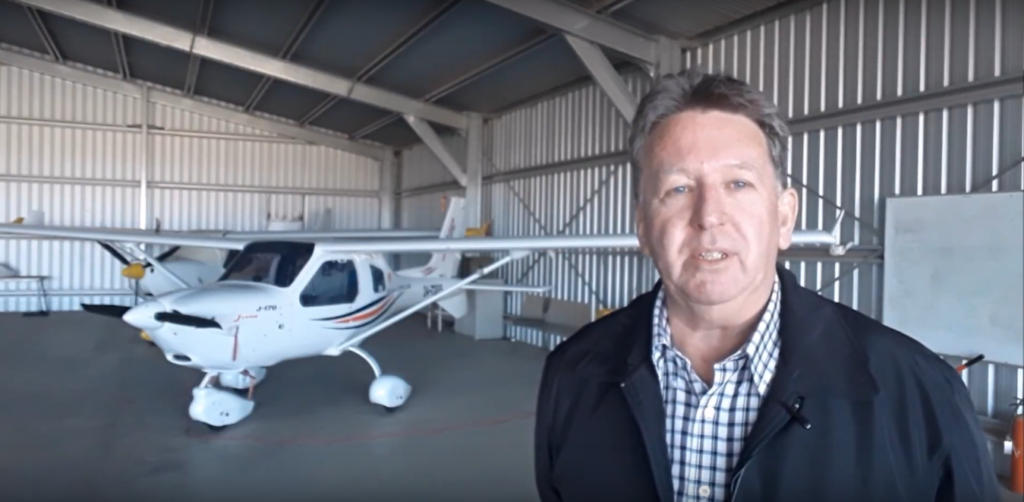
Which aircraft do you believe best balances realism and playability in DCS? Share your thoughts in the comments!
Author
Brendon McAliece (Aka Gunnie) is a military veteran with 23 years working on Jet Fighters, their weapons systems and ejection seat/module systems as well as munitions and R&D. Involved with flight simulation since the 1980s, he has flown all the major flight simulators over the years.
He is an Australian expat who has lived in Malaysia, UK, Saudi Arabia and more recently Thailand. He is a multi-lingual blogger who loves to share his life experiences here on LetsFlyVFR.com and DreamingGuitar.com, with his lifestyle and Travel experiences Blog plus his Dreaming Coffee website.
Learn More @
DreamingGuitar.com – DreamingCoffee.com – LetsFlyVFR.com
( HOME – BLOG – SHOP – ABOUT )
As an Amazon affiliate I may benefit from qualifying sales.
